
EURAMET

Centro Español de Metrología
Resumen: La colaboración de los Estados en materia de metrología ha sido una constante a lo largo de los tiempos, desde que existe el concepto Estado. En Europa, esta colaboración se ha visto grandemente potenciada y desarrollada con la aparición de EUROMET en la década de los ochenta y su transformación en EURAMET ya en la primera década del siglo XXI. Este artículo presenta una visión del papel que han jugado ambas organizaciones y en particular EURAMET en sus diez años de existencia para que a través de la colaboración se pueda abordar el desarrollo de patrones y técnicas de medida que apoyen el progreso de la sociedad, mejoren la competitividad de las industrias y den respuesta a los retos sociales en áreas como la salud, el medioambiente o la energía.
Palabras clave: EUROMET, EURAMET, colaboración en metrología, EMRP, EMPIR
Abstract:The collaboration of the States in the field of metrology has been a constant throughout the ages, since the State concept exists. In Europe, this collaboration has been greatly enhanced and developed with the creation of EUROMET in the 1980s and its transformation into EURAMET already in the first decade of the 21st century. This article presents a vision of the role played by both organizations and in particular EURAMET in its ten years of existence so that through collaboration can be approached the development of measuring standards and measurement techniques that support the progress of society, improve the competitiveness of industries and respond to social challenges in areas such as health, environment or energy.
Keywords: EUROMET, EURAMET, metrology collaboration, EMRP, EMPIR.
1.- Background
Metrology plays a key role in the development of science and societies. Since the dawn of civilization, measurements have defined the society, the government and the progress of civilizations. Metrology is now considered as a vector of competitiveness in technologically advanced societies.
In the late eighteenth century and during the nineteenth century, in parallel to scientific progress the movement of associations appears,, which is translated in conferences, signing international treaties, foundations of institutions and associations, etc.; all these could hardly be tackled unilaterally without the collaboration of states in projects of common interest.. This is where the decimal metric system, as a consecuence of the universal nature with which it was conceived, can be considered as the first significant example of this association in the history of modern science. The collective consciousness had been awakened and the power of coordinated scientific work was recognized.
Therefore the origin of metrology as it is known nowadays emerged in this way after the French Revolution in the late eighteenth century, with the decree of the French National Assembly where its national system of weights and measures was instituted with the nomenclature of its units, multiples and sub-multiples, that was sanctioned by a meeting of international experts convened in 1798. The French National Assembly legalized a decimal metric system of measurement that used as the unit of length the meter, which is defined as the ten-millionth part of the earth´s meridian quadrant and, as the unit of mass, the cubic decimeter of water at the temperature of 4 °C, where its density is the highest. Both units were materialized by a bar of platinum and a cylinder of platinum and deposited in the Archives of the Empire in 1799. This system was the precedent of our current International System of Units, the SI. The French Revolution and its ideologuists were able to initiate the change towards a “system of units for all people and for all time” not so dependent on the human being and its skills or tasks and based on the nature.
The next relevant milestone for metrology was the signing of the Diplomatic Convention “Metre Convention” by 17 countries, on 20th May 1875. It led to the creation of the International Bureau of Weights and Measures (BIPM), as a reference international organization, and the design and development of new prototypes of the meter and kilogram, which were delivered at the 1st General Conference on Weights and Measures in 1889.
The impact of the Metre Convention signing in industrialized countries at that time was huge from the legislative and logistical point of view, strengthening and reinforcing the idea of having national reference laboratories. As a consecuence, the establishment of the first large national physical and metrology laboratories started in Germany (PTR, 1887), United States (NBS, 1902) and Great Britain (NPL, 1903). Their foundations have to be understood primarily as a response to the need of industrial developments and where metrology played an important role.
During the twentieth century, practically all industrialized countries established their national metrology institutes (NMI) of various sizes and structures according to each country needs and bilateral collaborations between them started. In the late seventies and during the eighties the movements of regional collaboration among NMIs started and thus, in the Asia-Pacific region, the first association of regional metrology (ORM) of NMIs was created (APMP: “Asia Pacific Metrology Programme”) and, in Europe, the ” Western European Metrology Club (WEMC)” was created in 1974. WEMC had its first meeting in June 1974, at PTB (Germany), being active until 1989. WEMC was the embryo of EUROMET. In the late 80s the need for a better structured cooperation among European countries became more pressing at the same time as the EU started its specific activities in metrology. Under the initiative of NPL (UK), PTB (Germany) and BNM (France), the new concept of organization took shape and the memorandum of understanding for the establishment of EUROMET was signed in Madrid on 23th September 1987.

EUROMET was established as a voluntary Cooperation of National Metrology Institutes in the European Union (EU Member States, EFTA, negotiating countries for their accession to the EU) with the aim to promote the activities and metrological services coordination in order to obtain a high efficiency in the resources use. With the European reunification and the fall of the wall, EUROMET became to have 33 member countries. Its first chairperson was P. Dean (NPL), who was elected in 1988, and the last one until 30 th June 2007, Michael Kühne (PTB).
In 1999, another relevant milestone for the development of international metrology took place: the Mutual Recognition Arrangement of CIPM (MRA-CIPM) was signed, which generated an appropriate framework to promote mutual confidence in the measurement and calibration capabilities (CMC) among the countries and, in this new framework, the Regional Metrology Organizations (RMOs), such as EUROMET, reinforced their roles and fundamental purpose, helping and playing a starring role in the implementation of this arrangement, in particular in the review of the CMC, quality management systems and conducting regional comparisons.

In the beginning of this century EUROMET, maintaining its objectives and own activities, initiated a research activity that potentiated the start of a new structure that would allow to move from traditional individual cooperation projects among NMIs to an European Research Program in Metrology.
Metrology demand was and is growing more and more and it is clearly impossible to be addressed by each country and national metrology institute, so it was necessary to coordinate efforts and establish strategic research and development lines. Furthermore, it is well known that collaborative projects involve an investment with a high multiplier effect from both economic and social points of view.
Being aware of this reality known as “Metrology Paradigm”, Europe launched at the beginning of this century a number of European metrological research programmes, starting with MERA (Metrology for European Research Area, September 2002), which was followed by iMERA (implementation of MERA, April 2005), iMERA PLUS (2007), EMRP (2009) and the current programme, EMPIR. The EUROMET members coordinated and participated actively in a number of projects of MERA and iMERA, which facilitated a closer cooperation, coordination and collaboration among national metrology programmes. This fact facilitated the transition towards a new organization, EURAMET, and the implementation of large scale R & D programmes, the EMRP and the EMPIR.
EUROMET played a key role during its 20 years of life, promoting the collaboration among European NMIs, creating the conditions and adequate environment for a new stage of coordination, integration and smart specialization in the XXI century, which is currently leaded by EURAMET.
2.-EURAMET: 10 years promoting the coordination of European metrology
2.1 Creation and objectives
The new challenges for the European Research and Development Area required a higher level of integration and coordination for research in metrology, which showed, as discussed above, the need to establish a legal entity for the coordination of metrology, which was born in Berlin on 11th January 2007 with the signing of the constitution of EURAMET by 22 members and its subsequent inclusion in the German commercial register as eV on 4th April 2007.

EURAMET e.V. was established as an non-profitable association of public utility under German civil law (eingetragener Verein, eV) governed by Articles 21-79 of the German Civil Code (BGB). Since 1st July 2007, EURAMET e.V. is the successor of EUROMET.

Since 2007, EURAMET, the European Association of National Metrology Institutes, is the European Regional Metrology Organization (RMO) , which is internationally recognized and, in particular,by the BIPM for the implementation of CIPM-MRA arrangement. It coordinates the cooperation of European National Metrology Institutes (NMIs) in fields such as research in metrology, traceability of measurements to SI unit system, international recognition of measurement standards and calibration and measurement capabilities (CMC) of its members. Among these tasks, EURAMET is responsible, up to date, for the development and implementation of two European metrology research programmes, the EMRP (2009 – 2017) and the EMPIR (2014 -2024).
Its main objective according to its statutes is the promotion of science and research and the European cooperation in the field of metrology by:
-
- development and support of European-wide research cooperation in the field of metrology and measurement standards,
- development, updating and implementation of the European Metrology Research Programme (EMRP and currently EMPIR),
- support of Members and Associates when applying for research funds for the purpose of European cooperative projects,
- co-ordination of joint use of special facilities of Members,
- improvement of the efficiency of use of available resources to better meet metrological needs and to assure the traceability of national standards,
- technical co-operation with metrology institutes beyond EURAMET e.V and other regional and international metrology organisations;
- performing the tasks of a Regional Metrology Organisation (RMO) with the objective of worldwide mutual recognition of national measurement standards and calibration and measurement certificates;
- promotion and coordination of scientific knowledge transfer and experience in the field of metrology implemented by the following actions: joint training programmes, workshops and a web-based information forum, publication of scientific results in professional journals and organisation of scientific conferences;
- representing metrology at the European level and promoting best practice to policy and political decision makers with regard to the metrological infrastructure and European co-operation;
- co-operation with European and international organisations responsible for quality infrastructure, inter alia by participation in the preparation of harmonized technical documents;
2.2. EURAMET contribution to European metrology
During these 10 years, EURAMET has faced continuing challenges to respond to the expectations of its members and Europe. It has always maintained as a priority to help and assist in the progress of society, to improve the competitiveness of industries and respond to social challenges in areas such as health, environment or energy, through the contributions that Metrology provides.

These 10 years have been a constant development and adaptation to social, economic and legal environment, starting in 2007 a path that has no return. To lead this process, up to date, EURAMET has had four chairpresidents: Dr. Michael Kühne (PTB) (2007 – 2009), Dr. Leslie Pendrill (SP) (2009 – 2012), Dr. Kamal Hossain (NPL) ( 2012 – 2015) and Dr. Beat Jeckelmann (2015- 20xx) who have had the support of prominent directors of NMIs in the corresponding boards of directors. In this article we gather their views on the challenges faced during his terms and how they see the future of EURAMET.
How were lived the early days of EURAMET, in words of Dr. Michael Kühne:

Being the last Chairperson of EUROMET (2006 – 2007) and the first of EURAMET (2007 – 2009) the challenge in those days for the EUROMET/EURAMET team and its Chairperson was to prepare the transition from one organization to the other and to prepare for the operation of a large scale European research programme in metrology.
It was clear that, in order to receive funding from the European community for a research programme in metrology, EUROMET had to become a legal entity. The challenge was to find a legal entity that all EUROMET members could join. We achieved this by establishing EURAMET as a registered association under German law.
Probably the greatest challenge was to convince the European Commission, the European parliament and the participating member states of the necessity to fund a multi-million Euro research programme for metrology (EMRP). In parallel EURAMET had to develop the tools and procedures for the operation of such a programme and to convince all funding partners that EURAMET had the competence and integrity to execute it. With a lot of hard work we succeeded in all these challenges.
So, during these years, I believe that great progress was achieved for European metrology.
When I look today at EURAMET I see a very successful organization which has demonstrated that it can excellently operate large scale research programmes. Also in the application of the CIPM-MRA EURAMET has an excellent standing. The challenge for the future is to start coordinating the services in the field of metrology for Europe to serve science, industry and the citizens in the best possible way.
The historical perspective that these ten years provide allows to analyze the contributions that EURAMET has made to European metrology and among them we can highlight:
- It has provided a specific framework for research, development, and metrology services, creating networks of experts and promoting scientific collaboration among its members and associates. In the last four years it has been extended the framework allowing the participation of universities, industry and stakeholders.
- Development of a common vision and design of a strategic research agenda that meets the interests of all members and the EU.
- Development of multidisciplinary teams of experts. Improvement of critical mass of researchers in metrology, enabling to enter into emerging fields, non-traditional in metrology.
- Establishment of a framework for greater collaboration and information between technical committees (meeting of chairpersons of Committees and Board of Directors), which facilitates the implementation and management of strategic guidelines and policy of general interest.
- Starting a culture of knowledge, innovation and excellence in metrology in Europe. Some tools have been developed to support a policy of knowledge transfer among its Members and Associates. Euramet has implemented a framework to develop capacity building policies that are being financed within the R & D programmes in collaboration with the EU, as the EMRP or the current EMPIR.

- Contribution to the visibility of Metrology and connection with industries or stakeholders. It has increased, in particular, the visibility of European research in metrology globally, with the EMRP / EMPIR programmes considered as the main European players in the field of metrology research.
- The first steps have been taken towards an integration of facilities and resources in European metrology in parallel with a smart specialization.
- Contact and exchange with other international organizations or other NMIs outside EU has been facilitated.
- The long-term sustainability of European metrology has been enhanced through the financial support of the EU, although their structures must be adapted to be more efficient: integration + specialization.

Achievements during Leslie Pendrill´s term:
- EMRP General Agreement signed 2009.
- Metrology & Conformity Assessment (MoU & Collaboration Agreements signed 2010: CEN-CENELEC, WELMEC).
- Metrologists from both small and big NMIs equally as important [Pendrill 2010].

One of the strategical periods of EURAMET´s development during Kamal Hossain´s term.
“Highly committed, focused and visionary”. This is how Beat Jeckelmann described, Kamal Hossain, his predecessor as EURAMET Chairperson,when taking over the mandate in June 2015.”
It was a great privilege and honour for me of being the Chairperson during one of the busiest periods of EURAMET’s development. I enjoyed the job enormously and the challenge. To have the opportunity to work with so many committed and enthusiastic colleagues in Europe and worldwide was a remarkable experience.
It gave me great satisfaction to lead the development of EURAMET’s 2020 Strategy, including the Association’s strategic objectives for the period.
Key outcomes during my term included development of partnerships with external organisations, implementation of the recommendations of EMRP mid-term review particularly actions related to capacity building, enabling TC Chairs to be at the heart of our strategic development, and creation of new Task Groups on Energy, Environment and Health to increase effectiveness of our activities in key societal challenge areas. We increased emphasis on communication both externally, between EURAMET and external stakeholders, and internally, with the support of our newly appointed Communications Manager. Also, we developed closer interactions with the DIs, and successfully established clear influence and leadership in the CIPM MRA work through the Joint Committee of Regional Bodies.
With support of the Board, we implemented significant improvements in the Governance procedures and professionalism of the Association including the creation of the post of a General Secretary and strengthening of the Secretariat.
One of the major achievements for EURAMET during my time as Chair was the launch of the new 600 Million Euros European Metrology Programme for Innovation and Research, EMPIR. Such major achievements were the result of the efforts of many people and of excellent teamwork. We also developed and published a Strategic Research Agenda for European Metrology.
EURAMET has seen huge and exciting developments in the last ten years by creating and seizing opportunities. The organisation’s strength comes from an enthusiasm for co-operation and mutual support amongst its diverse members. The challenge is to meet diverse national needs balanced with the need to develop a truly networked European metrology infrastructure to help European stakeholders derive maximum benefit and be globally competitive. Looking ahead and for future success of the Association, I believe EURAMET must continue to build its external focus and promote the impact of metrology for end users.
MILESTONES
- 1988 Foundation of EUROMET: “European Collaboration in Measurement Standards” (MoU)
- 2003 MERA program: Feasibility study on the future development of European metrology
- 2005 iMERA program: “ Implementing the European Research Area for Metrology”. Design and establishment of EURAMET as a legal entity
- 2007 Inauguration of EURAMET e.V.: “European Association of National Metrology Institutes”
- 2007 iMERA- Plus program: “Development of the European Research Area for Metrology”
- 2009 Launching of EMRP: “European Metrology Research Programme”
- 2014Launching of EMPIR: “European Metrology Programme on Innovation and Research”
- 2017 10th Anniversary of EURAMET
2.3 EURAMET today, in numbers

EURAMET is, at present, a well-established organization with a clear agenda, a research strategy adapted to the European needs and a positive view of its future. The data show that EURAMET has acquired a leading position in joint research among the world Regional Metrological Organizations (RMO) and other RMOs are trying to follow its steps.
The figures prove this fact:
Members: 37 National Metrology Institutes (NMI)
Associates: 77 Designated Institutes (DI)
More than 7000 metrology experts distributed among the NMIs and DIs
Technical Committees: 10
Task Groups: 3 (Environment, Health and Energy)
Number of CMCs published in the BIPM data base (KCDB) on 1st March 2016: 10 949
Number of comparisons published in the BIPM data base (KCDB) on 1st March 2016: 151 key comparisons and 165 Supplementary Comparisons.
Number of EURAMET projects on 1st October 2016 (cooperation in research, inter-laboratory comparisons, traceability, assessments, consultancy and facilities sharing): 1116.
Number of joint research projects (iMERA Plus, EMRP and EMPIR) on 1st October 2016: 200.
EURAMET published documents (available on its website):
- Newsletter
- EURAMET rules and procedures
- Quality Manual
- EURAMET 2020 Strategy
- EURAMET general guidelines: 4
- Guías de calibración y técnicas: 21
- Metrology background documents: 2
- Strategy Research Agenda
- Documents related to the MERA, iMERA, EMRP and EMPIR programs.
- Documents describing impact examples of metrology joint research projects in fields like energy, environment or health.
Number of visits to the website in 2015: 82 078
Summary of the EMRP projects (2009-2017):
- 119 joint projects EU co-funded
- 408 million euros invested in R&D
- more than 23,5 million hours devoted to research
- 1214 participations in joint research projects of other institutions than NMIs or DIs.
- About 4000 presentations in conferences and workshops.
- 998 papers published (31 % co-authorships).
- 739 contributions to standardization committees
- 747 training events with more than 30 000 training days.
EURAMET operating budget in 2016: 3,5 k€
3. EURAMET vision and challenges
The metrology needs and the request for new services together with the technological complexities are constantly growing. New technologies are having a very important impact in this sense. Innovation and investment in new metrology capabilities and their disseminations are essential to follow the trends in demand and must be faced by a collaborative and efficient approach.
Furthermore, some of the present faced challenges are global, such as health, climate change, environment, energy or sustainability. These challenges require global solutions supported by reliable measurements that, in many cases, are beyond a single nation and its NMI. That is the reason why to take advantage of the present metrological resources beyond national borders is essential to face the key societal challenges.
EURAMET seen by its president, Dr. Beat Jeckelmann:

Since its creation in January 2007, EURAMET has successfully implemented the European Metrology Research Program (EMRP) and its successor: the European Metrology Programme for Innovation and Research (EMPIR). These initiatives have had a big impact in the European metrology research: more than 50 % is carried out in the frame of one of these two programmes. The collaboration among NMIs has been considerably increased, the quality of the research has been improved and large-scale projects, beyond the capabilities of a single NMI, have been realized.
The success of the R&D joint work is based in the marked spirit of collaboration among NMIs and DIs which started 30 years ago with the creation of EUROMET, the organization that preceded EURAMET. Besides the R&D collaborating work, EURAMET is today a well established RMO that gives support to its members in the realization and dissemination of the International System on Units (SI) and in obtaining the international approval of their calibration and measurement capabilities. All the activities are supported by a Secretariat made up of a human team with a great commitment and high professionalism. All of these reasons make EURAMET well prepared to face the future.
Metrology is linked to every aspects of the modern life and the request for new and better measurements will increase in the future. The NMIs, by themselves, will not be able to unilaterally address all the challenges. In consequence, it is essential to assure the sustainability of the metrology research programs and to develop a European coordinated metrology context leading, in the longer term, to a series of distributed centres of excellence, metrology experts and services. Furthermore, it is equally important to support its members and associated in developing an adequate metrology infrastructure to meet the needs of their countries and especially, to support the new NMIs and those that are in their development stage. Finally, metrology has to play a critical role in defining and establishing policies supported by firmed foundations. EURAMET needs to be proactive to raise awareness and increase its influence in the lawmakers, regulators, standardization bodies and legal metrology authorities based on the experience and knowledge of its members.
Europe does not have a big centre of excellence in metrology as the USA, so the cooperation among its members and a smart and sensible specialization is essential.
However, this issue should be treated as a strength, not as a weakness, in the European metrology infrastructure. We need to keep in mind that diversity, if properly managed, brings major benefits as distinctiveness and singularity, creation and innovation, decision-making based on a broad basis, better alternatives, wide experience and leadership of their members and last, but not least, flexibility and respect in the organization.
EURAMET has to manage this diversity and should be the catalyst and the tool to reduce the existing technological and knowledge gap among the European NMIs and DIs. There is a real opportunity to a synergic and smart cooperation to generate specialization and integration and to overcome obstacles and challenges that may prevent the existence of its members. This requires new structures and the distribution of services providing a balance among the local, national and European requests. The general objective should be to raise the European metrology level in order to make it more internationally competitive.
In the next years, EURAMET has to continue working in the lines of action included in its strategy and, at the same time, to adopt policies and to provide the means to mitigate the weaknesses identified in the EC public enquiry and in the report prepared by the expert panel which performed the intermediate evaluation of the EMRP:
- Insufficient access to specialized structures.
- Higher excellence in metrology research and more interdisciplinary research opened to the basic science.
- Promotion of specialized centres of excellence consistent with the European strategies.
- Greater involvement of industry and universities in the R&D programmes and EURAMET activities.
Metrology is a driving force particularly relevant in innovation to improve the industrial European competitiveness. Consequently, the new scientific developments can be implemented in new metrological techniques and new primary standards to support a high quality industrial production adapted to societal demand. As an example it is a fact that the so called 4th industrial revolution, industry 4.0, and the quantum technologies need metrology and EURAMET has a great deal to contribute to all of that in the coming years.
EURAMET is an actor and plays a central role to support the EU with metrology and make real the next decade challenge:
“to become the more competitive and dynamic economy in the world, based in the knowledge and capable to generate an sustainable economic growth with more and better jobs and a stronger social cohesion”.
EURAMET vision is:
“to be the leader in the development and application of measurement enabling Europe to be competitive, healthy and sustainable through innovation”.
Acknowledgements
The authors of this article express their gratitude to the past chairpersons and to the current Chairperson of EURAMET, who have collaborated with their experience offering a vision of these first ten years of EURAMET.
References
[1] European Metrology. Wolfgang Schmid. PTR/PTB: 125 Years of Metrological Research. PTB-Mitteilungen 122 (2012), No. 2.
[2] Case Study No.2- The Article 185 European Metrology Research Programme (EMRP). ERALEARN2020 Task 4.2, 18 May 2016.
[3] Organizaciones internacionales de metrología científica. José A. Robles Carbonell. Master de Metrología UPM. Modulo 004: Metrología y Calidad. 2015
[4] EURAMET Estrategia 2020. Ed.1. 15 Septiembre 2011
[5] Strategic Research Agenda for Metrology in Europe. EURAMET. 2015
[6] Metrology Center of Excellence. BoD WG. (B22.09/TB08.04) (B 23.09)
[7] Pendrill L R 2010 “A Conversation with Leslie Pendrill, SP Technical Research Institute of Sweden and EURAMET”, MEASURE, vol 5, 21 – 27, http://www.tandfonline.com/doi/abs/10.1080/19315775.2010.11721500
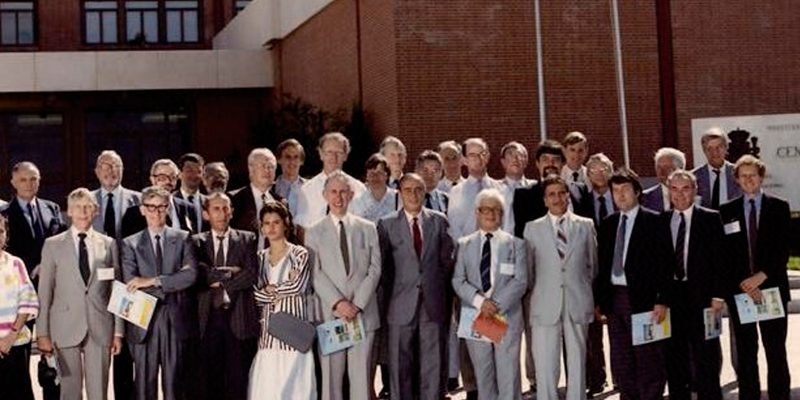

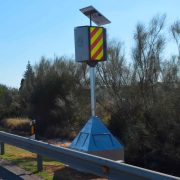
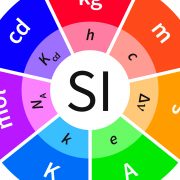
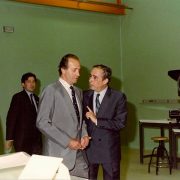

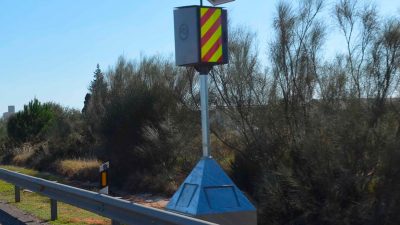
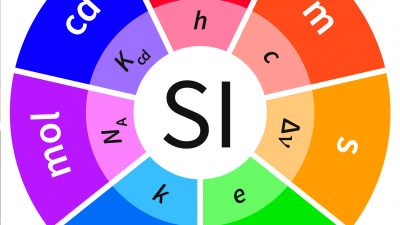
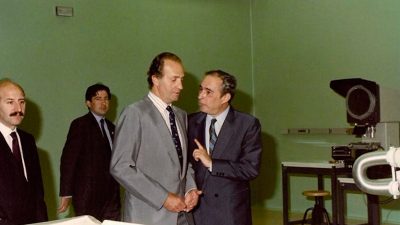
Comentarios